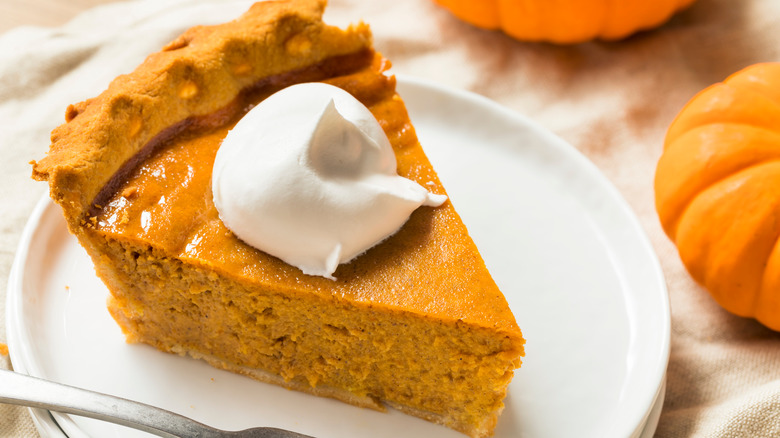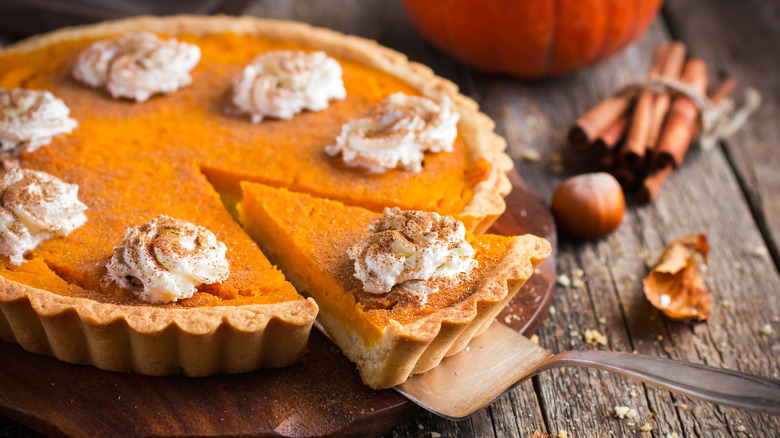This Might Be The Best Pumpkin Variety To Use For Pie
In October and November, we experience a double blast of all things pumpkin, pumpkin spice, and pumpkin pie. But, as The Kitchn warns, the pumpkins used for carving jack-o'-lanterns and those used for making pumpkin pies are very different.
The issue is that the big pumpkins that are great for carving also tend to be bland and might not be the best for cooking applications. Talking to The Takeout, Marie Wright, Chief Global Flavorist at ADM Nutrition, noted that if it were not for all of the flavors that go into pumpkin spice seasoning, probably no one would even like eating pumpkins, as she says, "I wonder if people would even eat pumpkin pie if it doesn't have pumpkin spice in it."
The Kitchn continues that it is easy to tell apart the gourds you'll want to use for pumpkin pie from those that would only really work well for jack-o'-lanterns. The pumpkins for baking are specially bred and are usually called "pie pumpkins" or "sweet pumpkins." They are less fibrous and sweeter, says Bon Appétit, adding, "their solid texture turns creamy with roasting, steaming, sautéing, or pureeing."
Once you get your hands on a pie pumpkin, cooking it is as easy as following your recipe of choice.
There's actually different species of pumpkins to choose from
Pumpkins and squashes belong to the genus Cucurbita. But there's even more specification that needs to be taken into consideration when choosing the right pick for making pumpkin pie. NC State Extension, a program dealing with agricultural sciences, lists pumpkins as belonging to both the species Cucurbita pepo and Cucurbita moschata. The former is the group that includes what we imagine a pumpkin to look like. The latter is the kind we think of when we imagine the flavor of pumpkin.
HuffPost explains Cucurbita moschata is also the ingredient found in most canned pumpkin pie products and, curiously, it resembles a butternut squash more than an archetypal pumpkin. The issue with the "traditional pumpkin," the piece continues, is that its large hollow shape allows for a lot of water. The water dilutes potential flavor — and no one wants flavorless pumpkin pie.
For that reason, the FDA decided against regulating "pumpkin products" as squash ones. The idea is that since pie pumpkins define our idea of what it really tastes like, the consumer is not being mislead by the advertising. They want the best option for pumpkin pie, so the fact that it technically is a squash is irrelevant.

